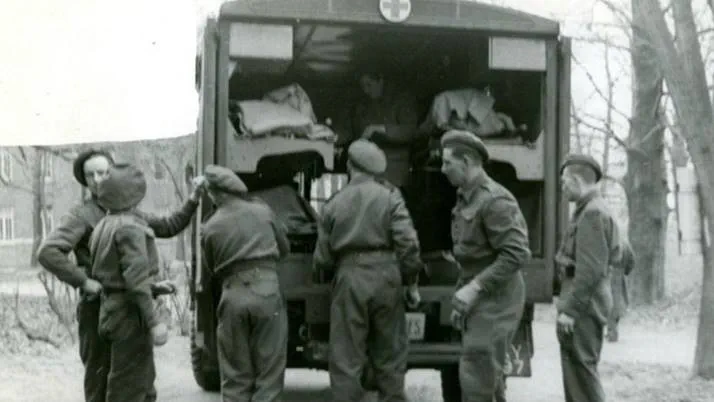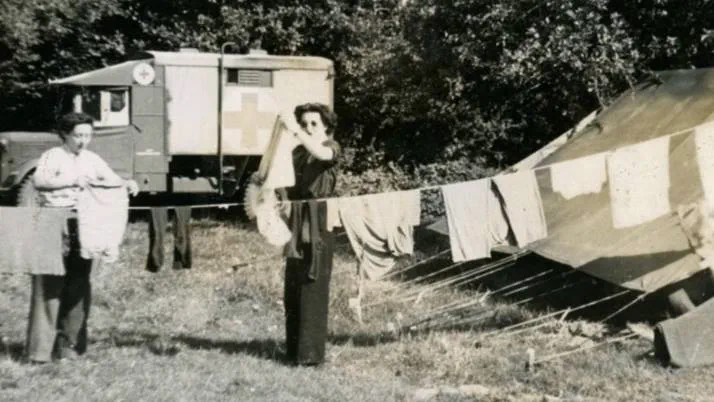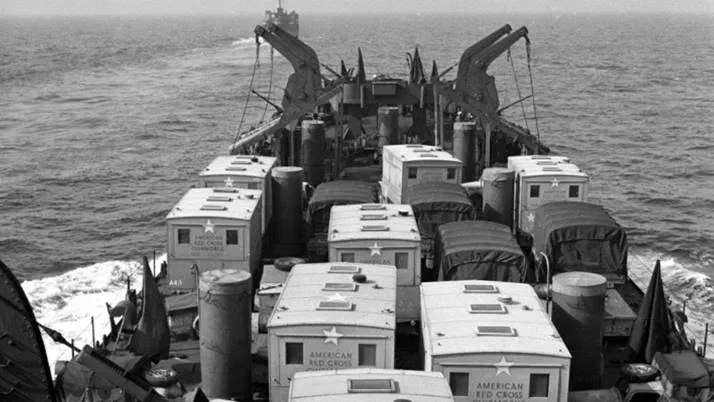D-day: how the Red Cross helped in World War 2
Last updated 19 April 2023
Field Director, American Red CrossMy first impression of the beach is that there were very few people there.
Then, on landing, I could see hundreds of soldiers scattered out and lying flat.
Every now and then a few would get up, run forward and fall flat again.
My first shell came whistling in and I hit the sand to help.
D-Day. Almost a century later, it brings up strong feelings and, for some, strong memories.
D-Day was the largest seaborne invasion in history. On 6 June 1944, over 150,000 British, American, Canadian and Free French troops landed on the beaches of Normandy in France.
Combined with major Soviet military action on the eastern front, it helped end the war in Europe.
The Red Cross was there, too, and we were involved at every stage, from planning supply chains to caring for wounded soldiers.

Red Cross ambulance platoon in Normandy
Blood, first aid chocolate: Red Cross organisations join forces
Stories of the Red Cross staff and volunteer preparations and experiences show how the British, American and Canadian Red Crosses worked together closely for a quick response to D-Day.
In the British Red Cross Hampshire branch, for instance, a hand-written D-Day diary explains how tonnes of supplies were brought towards southern ports following the invasion. Some were held there, ready to support the sick and wounded evacuated back to southern England.
The American Red Cross sent 50 field directors during the first month after the invasion. Some came with the first wave of assault troops, helping with the wounded and transporting supplies.
One field director wrote about how he made it to the beach aid station and helped with the wounded, providing first aid and blood plasma.
Others distributed comfort items to men who lost their personal possessions in the landing operations.
By four days after D-Day, American nurses and Red Cross hospital workers arrived to staff the evacuation hospitals.
They were soon busy visiting the wards serving coffee and chocolate to the wounded. Recreation tents provided the men with a place to write letters, play cards or talk.

A field hospital in Normandy.
Good spirits, despite the hardships
The first British advance party, which included teams from American and Canadian Red Cross, got to Normandy on 7 July. At that point, soldiers had not yet moved inland from the beachheads.
Conditions were difficult, with the first teams getting to Normandy in the middle of a 36-hour rainstorm. They slept in cots below ground level to avoid shell bursts.
Quickly joining field hospitals, they offered not just medical supplies and support for the wounded, but also morale-boosting comforts, including jam, books and even chess sets.
Both the British Red and American Red Cross helped convoys of wounded arriving day and night. Staff were often woken up at 2:00 am to serve refreshments.
But all sources from the time agree about their cheerfulness and dedication, and the important role they played in supporting the sick and wounded.

Clubmobiles cross the channels from England to France.
The American Red Cross was serving US troops stationed in the UK well before D-Day. In cities and towns near military bases, Red Cross clubs served doughnuts and coffee, and had areas with music, books and benches for relaxation.
To reach people stationed at military camps and airfields, the Red Cross came up with the clubmobile. Originally based in remodelled London buses, clubmobiles drove essentials to other areas doughnuts and coffee, of course and also gum and cigarettes.
Each was staffed by a British driver and three American women Red Cross workers, and could serve the military men at their work. At each stop, they turned up the music on loudspeakers and all refreshments were free.
After D-Day, American Red Cross clubmobiles came to France shortly behind the field directors and hospital workers, rolling onto the beach by mid-July. The first to arrive was named Daniel Boone.
At that point using military trucks instead of buses, they set up their doughnut-making operation and soon became part of the Normandy invasion scene.
The war in Europe lasted another 11 months. Throughout that time, the American and British Red Cross advanced with the troops, providing invaluable first aid and boosting the morale of the Allied forces.
- Find out more about the British Red Cross and American Red Cross during WWII
- Doris Zinkeisen: the frontline artist who painted the liberation of Bergen-Belsen concentration camp
Thank you very much to Alasdair Brooks, former heritage manager at the British Red Cross, who provided the research and inspiration for this blog.